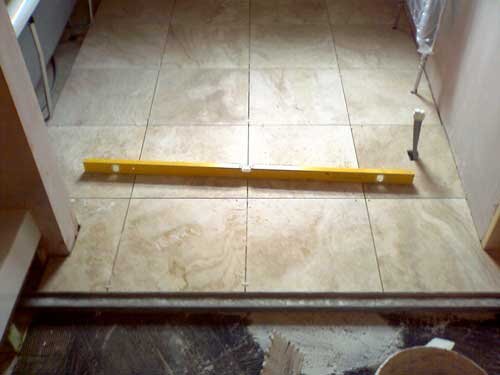M
maudegonne
Can anyone give me useful tips on grouting unhoned travertine?
I did one area but found it quite difficult: I put one coat of sealer on before grouting.... should I put more on?
When is the best time for washing it of? I found myself scrubbing a lot (left it too long..... but when it was softer I was washing it out of the groutlines).
Any tips are welcome
Cheers
I did one area but found it quite difficult: I put one coat of sealer on before grouting.... should I put more on?
When is the best time for washing it of? I found myself scrubbing a lot (left it too long..... but when it was softer I was washing it out of the groutlines).
Any tips are welcome
Cheers

